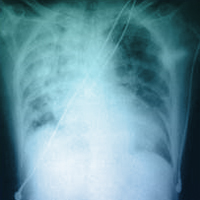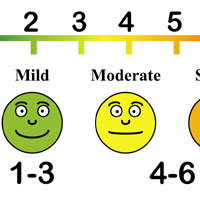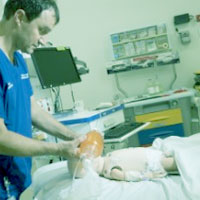Tag: study

Too Much SALT on the ICU?
There has a been a little flutter of activity in the #FOAMed world this week about two trials published in the NEJM on the subject of balanced fluids in the care of critically ill patients, and also on admitted patients in... read more

Comparison of Etomidate and Ketamine for Induction During Rapid Sequence Intubation of Adult Trauma Patients
Induction doses of etomidate during rapid sequence intubation cause transient adrenal dysfunction, but its clinical significance on trauma patients is uncertain. Ketamine has emerged as an alternative for rapid sequence intubation... read more

Haloperidol Prophylaxis in Critically Ill Patients with a High Risk for Delirium
The use of the delirium prevention protocol seems to result in improvement of several delirium outcome measures. Prophylactic treatment with low dose haloperidol in critically ill patients with a high risk of delirium likely... read more

The Randomized Educational ARDS Diagnosis Study
Radiographic criteria for acute respiratory distress syndrome have been criticized for poor reliability. Our objective was to test an educational intervention to improve the radiographic identification of acute respiratory... read more

Update of a Systematic Review of Autoresuscitation After Cardiac Arrest
Although case reports of autoresuscitation are hampered by variability in observation and monitoring techniques, autoresuscitation has now been reported in adults and children, and there appears to be a distinction in timing... read more

Comparison of Self-Reported and Behavioral Pain Assessment Tools in Critically Ill Patients
Self-reported and behavioral pain assessment scales are often used interchangeably in critically ill patients due to fluctuations in mental status. The correlation between scales is not well elucidated. The purpose of this... read more

Pressure Injuries and Sedation: Are they related?
Critically ill patients inherently have most of the risk factors for the development of pressure injuries. One of the key factors is immobility, which is very frequent in ICUs. This lack of mobility is enhanced by the administration... read more

Research Aims to Fine-Tune Sepsis Diagnosis
Work designed to improve diagnosis of one of the leading causes of death in children is under way in Brisbane, led by a University of Queensland researcher. Mater Research Institute-UQ Associate Professor Luregn Schlapbach... read more

Effect of the Pulmonary Embolism Rule-Out Criteria on Subsequent Thromboembolic Events Among Low-Risk Emergency Department Patients
Does use of the pulmonary embolism rule-out criteria (PERC) in emergency department patients with low clinical probability of pulmonary embolism (PE) safely exclude the diagnosis of PE? Among very low-risk patients with suspected... read more

The Safety of a Novel Early Mobilization Protocol Conducted by ICU Physicians
There are numerous barriers to early mobilization (EM) in a resource-limited intensive care unit (ICU) without a specialized team or an EM culture, regarding patient stability while critically ill or in the presence of medical... read more

Incidence of NV-HAP in the United States
Because nonventilator hospital-acquired pneumonia (NV-HAP) is understudied, our purpose was to determine the incidence, overall burden, and level of documented pneumonia preventive interventions of NV-HAP in 24 U.S. hospitals.... read more

Clinicians’ Perceptions of Rationales for Rehabilitative Exercise in a Critical Care Setting
Rehabilitative exercise for critically ill patients may have many benefits; however, it is unknown what intensive care unit (ICU) clinicians perceive to be important rationale for the implementation of rehabilitative exercise... read more

Clinical Impact of External Laryngeal Manipulation During Laryngoscopy on Tracheal Intubation Success in Critically Ill Children
External laryngeal manipulation during direct laryngoscopy was associated with lower initial tracheal intubation attempt success in critically ill children, even after adjusting for underlying differences in patient factors... read more

Sepsis Patients can be Risk Stratified at the Time of Diagnosis
Multicenter Meta-Analysis Reveals Sepsis Patients can be Risk Stratified at the Time of Diagnosis Demonstrating Potential to Improve Critical Care Medicine on a Global Scale. For this study, the team identified a large collection... read more








